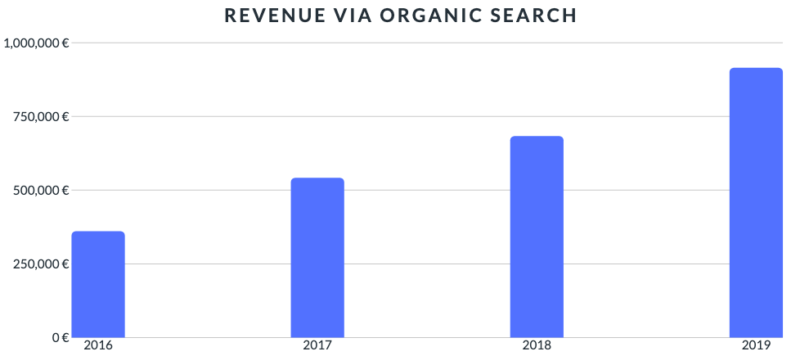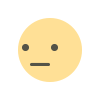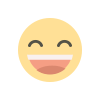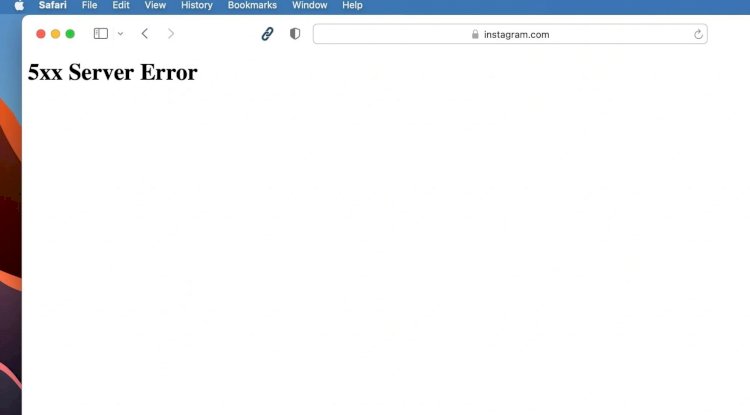Case study: The true value of informational content for e-commerce SEO
Case study: The true value of informational content for e-commerce SEO

The true value of informational content for e-commerce SEO is often difficult to prove. Some content marketers and SEOs are convinced that informational content can serve as a link-worthy asset that will attract natural links from other websites. The acquired links are then supposed to help improve the SEO performance of the entire online shop.
But how do we isolate factors to demonstrate that it is indeed the informational content that contributes to a website’s overall SEO performance, and not other optimizations and developments? This article presents a case that supports the theory of informational content helping commercial pages rank better and generate additional sales.
Are you in a hurry? Jump straight to the TL;DR summary of this article.
Background: SEO strategy and performance
The e-commerce site we are looking at in this case study was first launched in 2011, but the current SEO strategy was only implemented in 2017. In a nutshell, it consists of the following activities:
Technical SEO:
- Making the website’s content (60.000 product pages and 80 category pages) crawlable and indexable for search engines
- Heavy focus on improving page speed for users and search engine crawlers
Content:
- Reorganizing the existing informational content pages and adding new ones
- Adding contextual internal links from informational content to category pages
Active link building has never played a role in this website’s SEO efforts. All links that are currently pointing to the domain were either by-products of other marketing activities and partnerships or were generated naturally by people voluntarily linking to the website’s content.
This approach has yielded great results for the business over the past two and a half years. Since the implementation of the new SEO strategy, the domain’s visibility in Google’s SERPs, as calculated by Sistrix, has grown significantly. The growth was only interrupted by a major setback caused by the so-called Medic Update in the summer of 2018, but it recovered during the March 2019 Core Update:

The growth in visibility has translated into an increase in sales generated via organic search from EUR 359k in 2016, the year before the SEO strategy was implemented, to EUR 914k in 2019:

The revenue numbers for organic search traffic were tracked with Google Analytics and calculated with the help of a custom attribution model that does not only take into account the last interaction before the sale, but also factors in all previously tracked interactions of a user with the website.
Using the same attribution method, we can also show the contributions of the different page types as landing pages to the overall revenue generated through organic search. In 2019, the informational content pages only attracted traffic worth 2,36% of the overall SEO revenue (screenshot from the Google Analytics Model Comparison Tool):

One area in which the informational content pages have shown a very good performance is the natural acquisition of backlinks. Out of the ten pages on the website that have the highest number of links from other domains pointing to them, five are informational content pages, four are category pages and one is the home page.
Looking at the available information, it is hard to tell which role the informational content pages really play for the great overall SEO performance of the shop. Their direct contribution to sales is small, but they do have a decent share of the website’s backlinks pointing to them. Do these backlinks really help the commercial shop pages rank better and generate more sales through organic search traffic?
Removing all informational content pages
In late 2019, a drastic business decision brought about some major changes for the company. Despite the great performance over the past few years, the shop is just a relatively small player within a bigger organization. The company belongs to a bigger corporation, which also owns a big direct competitor of the shop. In order to cut costs, it was decided to move the entire handling of the online shop over to the big direct competitor.
The new owners are planning to replace the entire shop with their own systems, and they only want to keep the domain name and the logo of the current shop. They have made it very clear that they are not planning to use any of the informational content that has been built up over the past years. Because of this, the company that is currently still in control of the shop decided to remove the content and save it for other projects that they might work on in the future.
Roughly 25 informational content pages were removed and the URLs were redirected to the shop’s home page. The redirects were not implemented in the hope that rankings would be transferred to the home page. In a hopeless situation, setting up redirects instead of 404 or 410 status codes was just a spontaneous decision without any specific motivation. No other changes were made to the shop in the weeks before and after the informational content was removed.
Impact on the website’s rankings
For the first few days after the informational content pages were removed, Google seemed to be quite forgiving. Some of the URLs of the removed pages kept ranking although they were redirecting all traffic to the shop’s home page. This might also be due to the fact that the pages were not crawled immediately, so it took Google a while to detect and process all changes.
Ten days after the content was removed, all rankings for the directory that previously contained the informational content pages were completely gone:

Please note that the daily visibility curve in the above screenshot might not represent the drop with complete accuracy. Although Sistrix calculates the visibility daily, it seems that they do not scrape the SERPs for every single one of the millions of keywords in their database every day, so ranking changes might only have an impact on the daily visibility graph a few days after they occur.
Interestingly, the overall visibility of the domain also took a serious blow, with losses far bigger than just the visibility of the removed directory. Within three weeks after the removal of the informational content pages, the shop had lost almost one third of its overall visibility, although the removed content previously only made up roughly 1% of the domain’s visibility:

The home page and several category pages lost lots of their page 1 rankings for commercial intent search queries with high search volumes. The following screenshot from the Sistrix ranking changes report shows an extract of the most important rankings that were lost after the informational content pages were removed:

Please note that the shop did not sell sunglasses and that the language was not English. The keywords and the URLs in the above screenshot were changed in order to protect the identity of the business, but the search intents were maintained and all other numbers in the screenshot (search volume, CPC, positions, etc.) are real.
Are the ranking drops and visibility losses of the home page and category pages directly linked to the removal of the informational content pages, and if so, how and why?
Possible reasons for the ranking drop
The most convincing theory for why the rankings of the home page and category pages dropped after the informational content pages were removed is related to links. As mentioned above, the informational content pages had a fair amount of links from other domains pointing to them. Within their content, there were also contextual links pointing to the home page and category pages, which were supposed to pass on the relevance of the backlinks pointing to the informational content pages to pages that could cater to more commercial search intents.
After the removal of the informational content pages, the backlinks pointing to them lost all of their relevance and the internal links pointing from the informational content pages to other pages on the domain were also completely lost.
However, there are a number of other factors that might play a role and there are also some unknowns that should be addressed.
The URLs of the informational content pages were redirected to the home page, which probably results in the backlinks pointing to the original pages no longer passing all of their relevance to the redirect targets, as their content is completely different from the originally linked pages. Google officials have confirmed that redirects to less relevant pages can be treated as so-called “soft 404s.”
The question arises whether this situation would have played out differently if the URLs of the informational content pages had given back 404 or 410 status codes instead of redirecting to the home page. Would a backlink to a 404 page or to a URL that gives back a 410 status code lose less relevance than a “soft 404” caused by a redirect to a non-matching target?
It would seem that in this particular case, it would not make a difference if the pages gave back a 404 or 410 status code instead of redirecting to the home page. The only way to save some of the relevance of the backlinks might have been to redirect each removed URL to a similar piece of content, which was not an option in this case.
It might also be tempting to connect this case to theories about the topical relevance of the entire domain or the more recent SEO buzzword “E-A-T”. One might argue that informational content has a value in itself that goes beyond backlinks and internal links passing on relevance to commercial pages. While these ideas should not be discarded entirely, they are quite vague and even more difficult to prove.
Another unknown that needs to be addressed are external factors that might have had an impact on the website’s rankings. The ranking changes that happened after the informational content pages were removed might be coincidental and not directly related to the removal of the content. It is always difficult to completely exclude the possibility of Google algorithm changes or updates being the real cause of observed ranking changes.
The next section of this case study delivers more indicators that support the belief that the ranking changes were not coincidental, but indeed related to the removal of the informational content pages.
Recovery after putting the content back
About 3 weeks after removing the informational content pages, the company that was still in control of the website decided to put the entire content back temporarily. This decision was made for the sake of SEO science, in order to test if the ranking loss was indeed related to the removal of the informational content pages. Also, they wanted to hand over the website in the best possible state, even if the new owners had not changed their mind about using the informational content on the new website.
The following screenshot of the daily Sistrix visibility shows what happened to the domain’s overall visibility in Google’s search results after the informational content pages were put back:

Three weeks after putting all informational content pages back in place, the overall visibility of the website has fully recovered and gone back to the level it had before the informational content pages were removed. The home page and category pages regained most of the top rankings for commercial intent queries that they had before the removal of the content, except for some slight changes that are within the usual range you would expect over a period of six weeks, due to normal fluctuations and seasonality.
What do we learn from this case?
The main takeaway from observing this case is that the data strongly suggests that the informational content pages do indeed help the home page and category pages rank better for queries with commercial intent.
The exact distribution of factors remains unclear, but it seems likely that links from other domains pointing to the informational content pages together with internal links pointing from the informational content pages to commercial pages play a major role in the improved SEO performance of the commercial pages.
TL;DR
- An e-commerce site with 60.000 product pages, 80 category pages and 25 informational content pages removed all informational content pages and redirected the URLs to the home page.
- Before their removal, the informational content pages only generated 2,36% of sales via organic search traffic, but a significant share of the domain’s backlinks pointed to them.
- After the removal of the informational content pages, the shop lost about one-third of its overall visibility as the home page and category pages lost most of their top rankings for commercial intent search queries.
- About three weeks later, the informational content was put back, in order to test if the ranking drops were indeed related to the removal of the content.
- Another three weeks later, the domain’s visibility was fully recovered and the home page and category pages regained their good rankings for commercial intent search queries.
- The data suggests that the informational content pages do indeed help the home page and category pages rank better for search queries with commercial intent.
- The most likely explanation lies in the relevance of backlinks from other domains pointing to the informational content pages, which is then passed on to commercial pages via contextual internal links.
Opinions expressed in this article are those of the guest author and not necessarily Search Engine Land. Staff authors are listed here.
About The Author Eoghan Henn is a freelance technical marketer and the co-founder of searchVIU, a website migration SEO tool provider. He also teaches digital marketing at the University of Santiago de Compostela. Before moving to Spain and starting his current roles, he worked as a consultant for digital marketing agencies in Germany and Belgium. His areas of specialization include international and technical SEO, Google Tag Manager implementations and web analytics.
What's Your Reaction?















